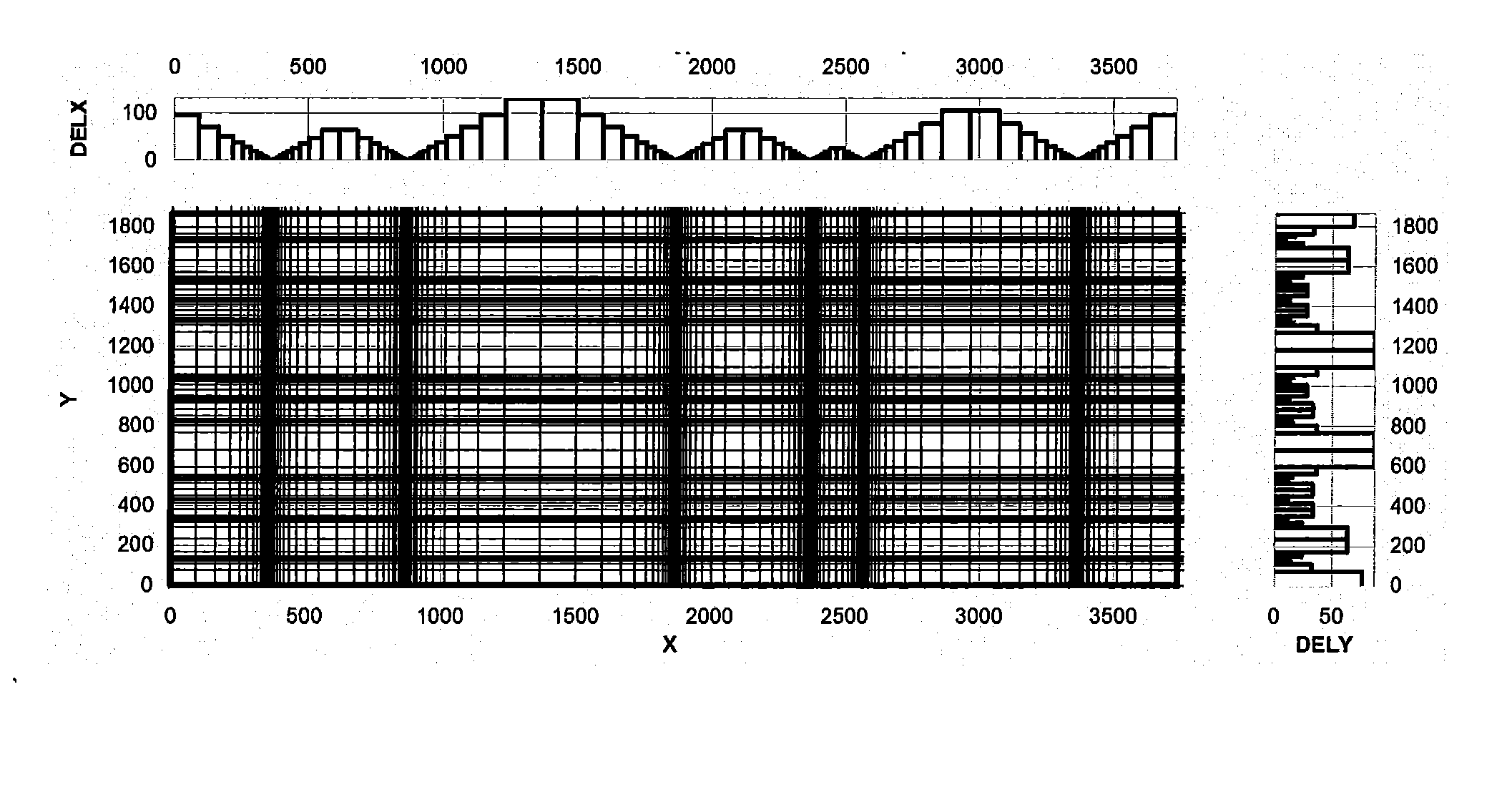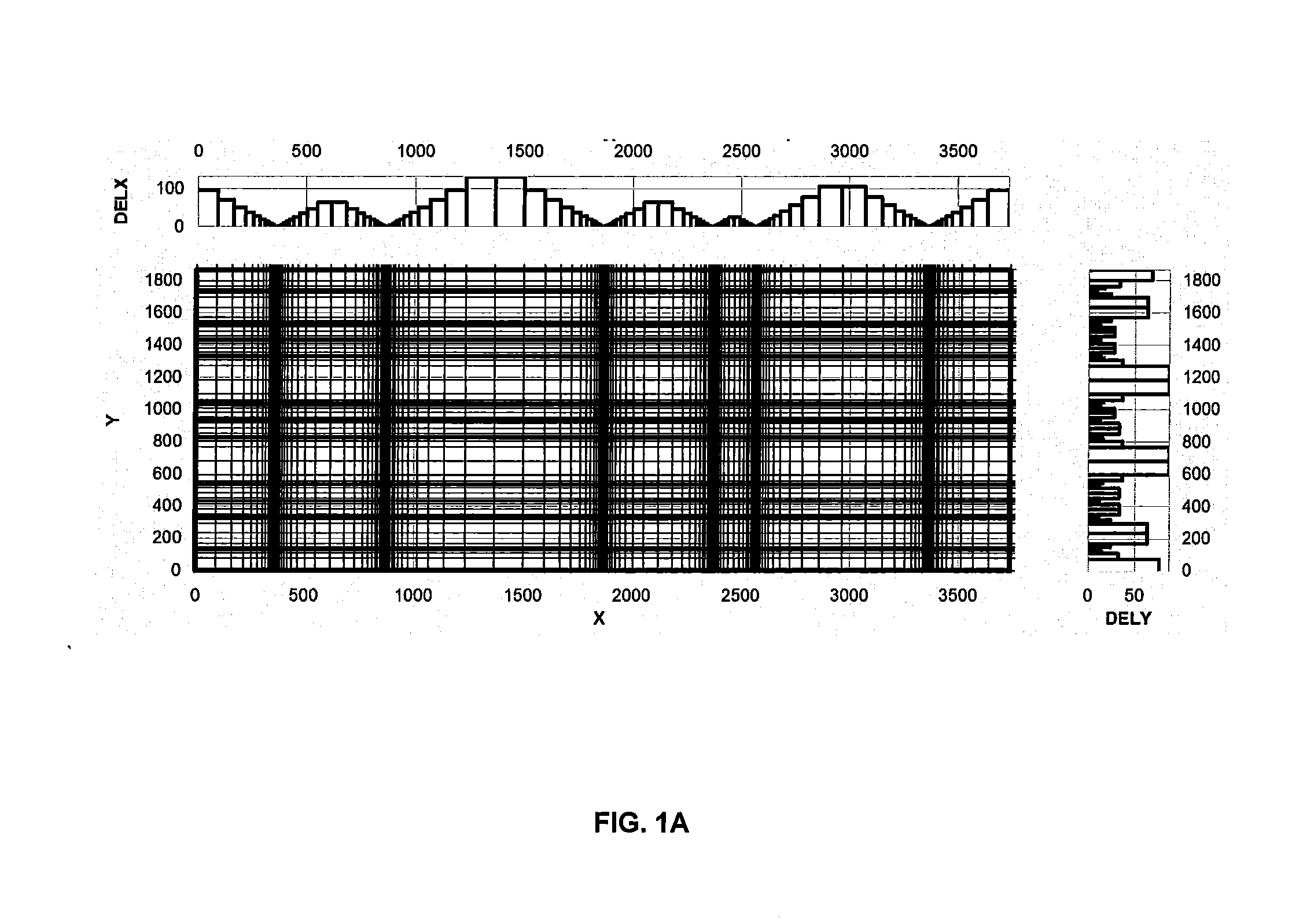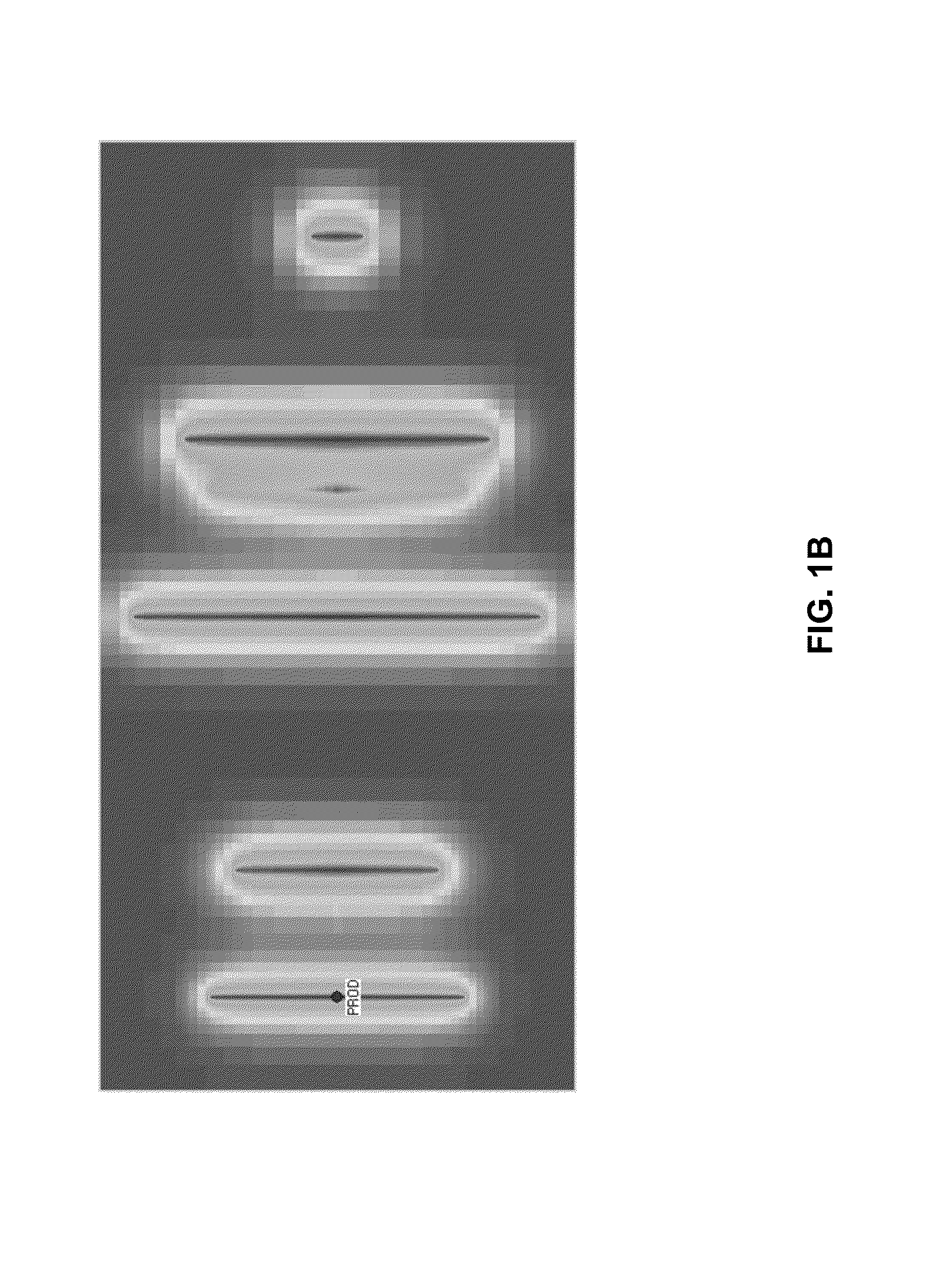Automatic cartesian gridding with logarithmic refinement at arbitrary locations
a cartesian grid and logarithmic refinement technology, applied in the field of computer simulation of flow in subterranean formations, can solve the problems of limited use of conventional grid generation tools, lack of scalability of conventional tools that allows for core-based applications
- Summary
- Abstract
- Description
- Claims
- Application Information
AI Technical Summary
Benefits of technology
Problems solved by technology
Method used
Image
Examples
example
[0024]The process of logarithmic gridding may be simplified as a problem of dividing a length of L into n cells with logarithmic refining at k spots whose positions are given.
Method
[0025]Logarithmic spacing around a point, given the inner-most radius ro:
ri=α·ri-1=αi·r0 where i=1 . . . n (1)
[0026]Relationship between the number of spacings and the maximum radius:
n=logα(rn / r0) (2)
[0027]For the given problem, logarithmic spacing are required for k segments of half lengths di, i=1 . . . k
[0028]Number of spacings for each segment:
2ni=2logadir0fori=1..k(3)
[0029]The total number of spacing is specified:
Σi=1k2ni=2Σi=1klogadir0=n(4)
[0030]This equation can be solved for α:
n2=logaΠi=1kdir0k(5)a=(Πi=1kdir0k)2n(6)[0031]When this value of α is used to calculate the spacing positions, the actual total number of spacings Σ ni will approximate n. Any difference is due to rounding off (ni are round numbers). This can be corrected by recalculating α for each segment. However, in the end, α for diffe...
PUM
 Login to View More
Login to View More Abstract
Description
Claims
Application Information
 Login to View More
Login to View More - R&D
- Intellectual Property
- Life Sciences
- Materials
- Tech Scout
- Unparalleled Data Quality
- Higher Quality Content
- 60% Fewer Hallucinations
Browse by: Latest US Patents, China's latest patents, Technical Efficacy Thesaurus, Application Domain, Technology Topic, Popular Technical Reports.
© 2025 PatSnap. All rights reserved.Legal|Privacy policy|Modern Slavery Act Transparency Statement|Sitemap|About US| Contact US: help@patsnap.com



